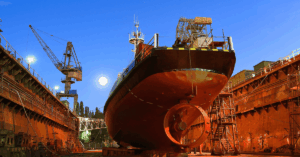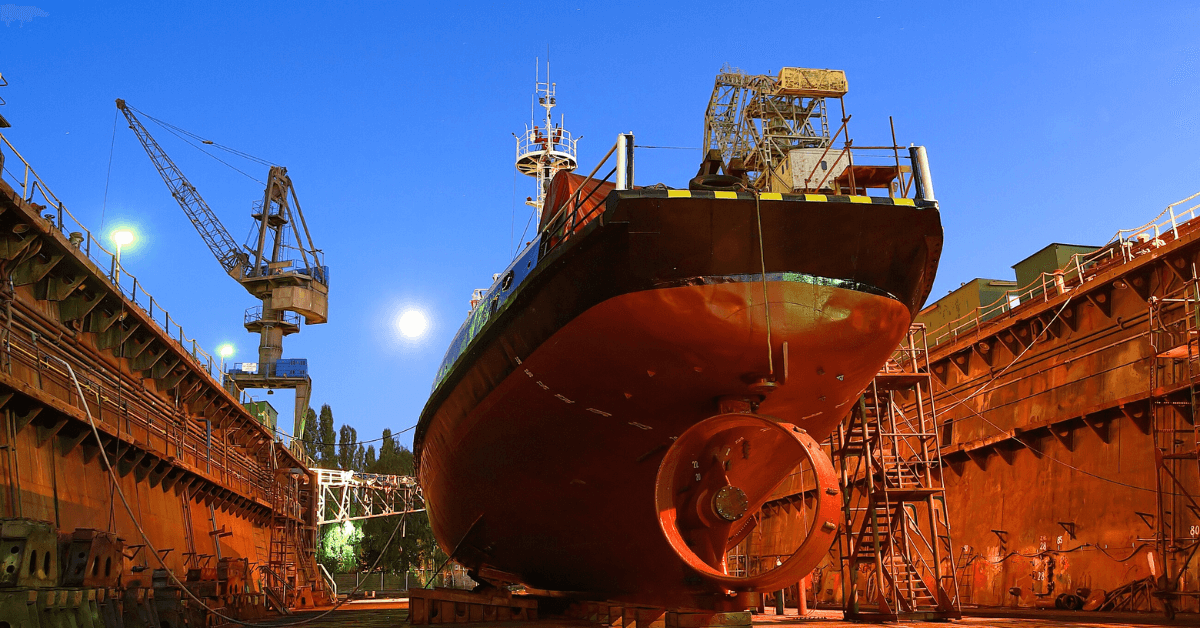
Cargo Ship Headed To Lakshadweep Sinks Off Mangaluru, All 6 Crew Rescued
May 16, 2025
Port Of Antwerp-Bruges Unveils Autonomous Electric Shuttle At Medrepair Terminal
May 16, 2025

Russia has announced its ambitious plan to build more than 1,600 ships by 2036 to modernise its shipbuilding industry and reduce reliance on foreign technologies amid ongoing international sanctions.
These efforts are backed by a record 500 billion rubles (about $6.2 billion) in federal funding allocated for the next six years, as confirmed by Russian Prime Minister Mikhail Mishustin.
The government’s plan includes building exactly 1,637 civilian ships by 2036, with 713 vessels scheduled to be completed by 2030. This will be followed by another 2,634 ships constructed between 2037 and 2050.
The program focuses on a variety of ship types, including 279 fishing fleet vessels, 122 vessels for regular sea transport, 51 ships for the Northern Sea Route, 251 river-sea class transport ships, 541 auxiliary and service vessels, 375 passenger and cargo-passenger ships and 18 icebreakers by 2036
Between 2037 and 2050, the targets include 465 fishing vessels, more than 200 sea transport ships, nearly 90 vessels for the Northern Sea Route, 336 river-sea class vessels, 876 auxiliary and service ships, over 600 passenger and cargo-passenger units and 29 additional icebreakers.
One of the top priorities is to support shipping operations along the Northern Sea Route (NSR) and the North-South transport corridor, which links Russia to friendly nations via the Caspian Sea. The government is also focusing on inland navigation and river tourism.
Officials discussed the importance of building large-capacity vessels, such as crude oil tankers, LNG carriers, shuttle tankers, container ships, and bulk carriers.
At the same time, there will be significant investment in icebreakers, ferries, support vessels, trawlers, and other service ships to strengthen infrastructure for Arctic and coastal operations.
The renewal of older fleets, especially passenger and fishing vessels built in the 1970s and 1980s, is also a main focus of the strategy.
The government made it clear that this move is in response to the foreign sanctions imposed since the start of the war in Ukraine. These sanctions have blocked Russia from accessing many imported technologies and ship components.
The strategy aims to increase self-sufficiency by producing at least 50% of ship components domestically by 2036, and growing that figure to 80% by 2050.
Additionally, the government wants to raise the share of civilian products within the shipbuilding sector to 61% by 2036, and to 64% by 2050, reducing dependency on military orders.
To meet these goals, the Russian government plans to:
- Build new shipyards
- Expand existing production facilities
- Modernise ship repair centres
- Advance research and development (R&D)
- Attract new investors
Mishustin highlighted the need to eliminate bottlenecks in production and boost capacity at domestic yards. The plan also targets an increase in labour productivity through automation, digitalisation, and a transition to large-block shipbuilding methods.
In terms of workforce, the industry is expected to grow by 15% by 2036, reaching around 190,000 workers. More talent will also be recruited for design, engineering, and technical roles to support future shipbuilding projects.
Manturov emphasised that, as Russian shipbuilders gain experience and global competitiveness, government involvement will decrease, allowing the sector to function more independently from state defense orders.
He added that many of the outlined strategies are already in work, with companies beginning to adopt the planned changes ahead of schedule.
The government has set clear performance targets:
- Production facility utilisation should reach 61% by 2036, and 73% by 2050
- Serially produced vessels are to make up 50% of the total output by 2036
Reference: interfax
Source: Maritime Shipping News


